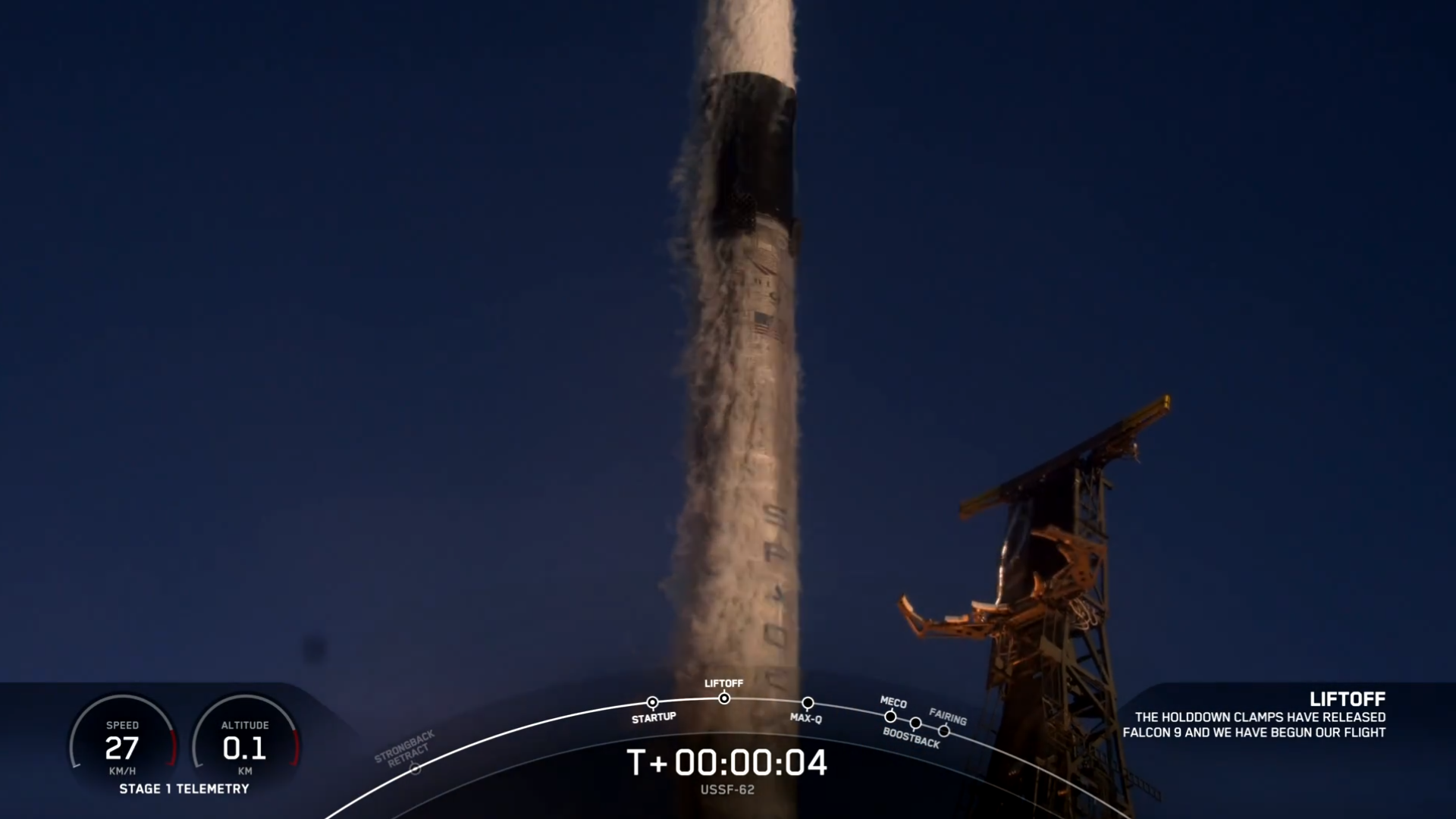
SpaceX has successfully flown its second dedicated U.S. Space Force payload of 2024, following Thursday’s spectacular launch of the inaugural Weather System Follow-on Microwave (WSF-M) satellite to usher in a new generation of operational environmental monitoring from Sun-synchronous orbit. In the 13th mission of the year out of Vandenberg Space Force Base, Calif., the B1082 booster—one of the newest “West Coast Falcons”, having entered service only in January—sprang on time from Space Launch Complex (SLC)-4E at 7:25 a.m. PDT and returned eight minutes later to an on-point touchdown on neighboring Landing Zone (LZ)-4.
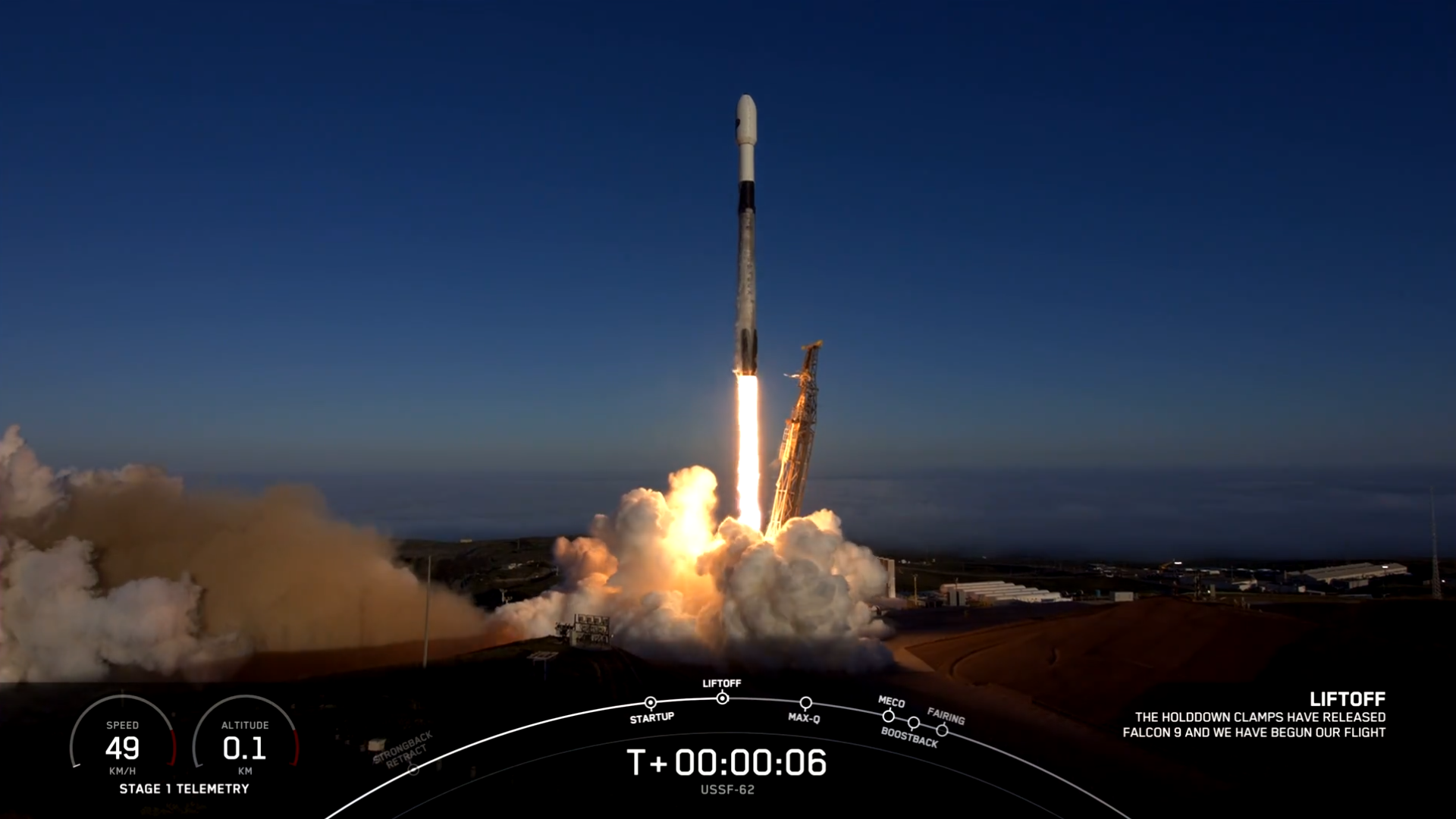

Today’s flight marked the third Falcon 9 to roar aloft from the West Coast inside April’s first half, a remarkable launch pad turnaround cadence which saw USSF-62 vacate SLC-4E only 4.5 days after a Starlink mission last Saturday. Placed in context, only in April 2023 did SpaceX first fly as many as three times out of Vandenberg in an entire calendar month and it passed its first four-launch West Coast month for the first time last January.
B1082 was making the third outing of her career, having come online on 3 January for 2024’s first SpaceX mission. She went on to fly again in mid-February for the 300th flight of a Falcon 9 vehicle, successfully wrapping up the 200th consecutive safe landing of a booster. Those two initial flights delivered dozens of Starlink internet communications satellites into low-Earth orbit and both terminated with picture-perfect Autonomous Spaceport Drone Ship (ASDS) touchdowns out at sea in the Pacific Ocean.
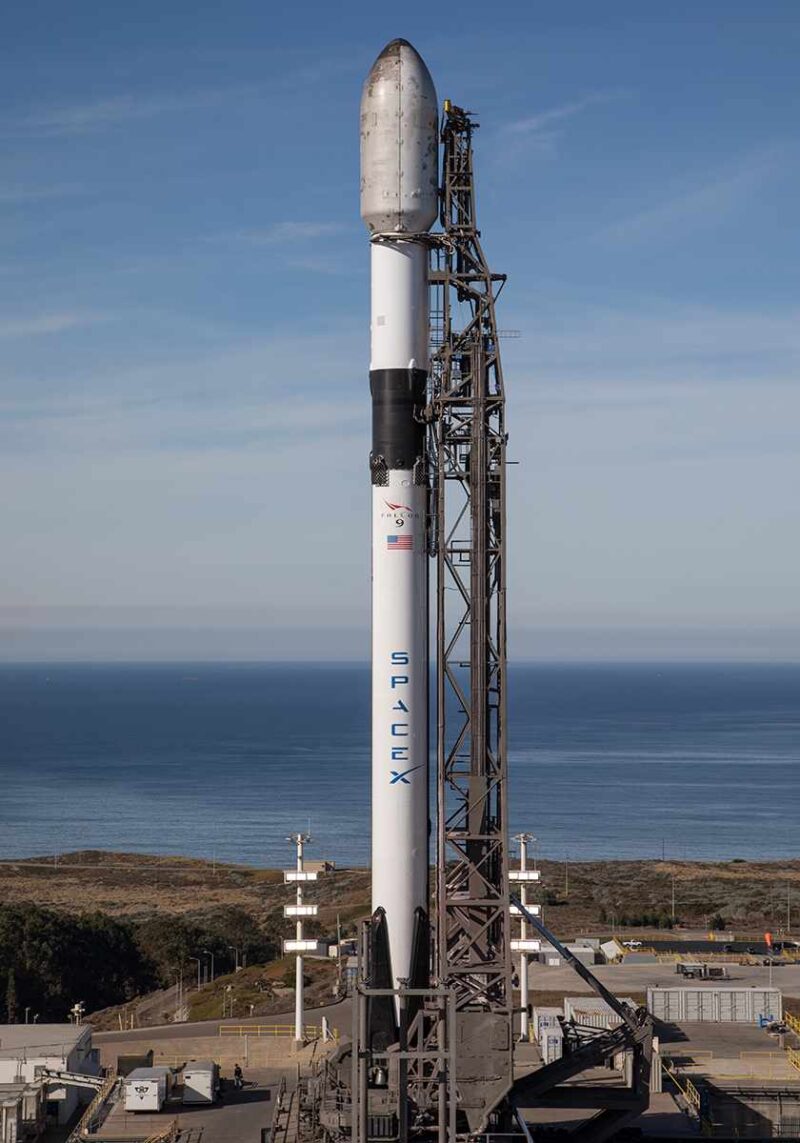

Principal payload for her third flight on Thursday was USSF-62 and the first Weather System Follow-on Microwave (WSF-M) satellite, one of three National Security Space Launch (NSSL) missions awarded to SpaceX in May 2022 for future Falcon 9 launches, as part of the Space Systems Command (SSC) Phase 2 Launch Service Procurement contract. In addition to USSF-62, that triad of SpaceX missions also included the multi-payload USSF-124, launched out of Cape Canaveral earlier this spring.
Weighing about 2,600 pounds (1,200 kilograms), WSF-M1 was developed by Broomfield, Colo.-based Ball Aerospace—now part of BAE Systems, Inc., which concluded its acquisition of Ball earlier this year—under contracts signed back in November 2017 with the Air Force’s Space and Missile Systems Center (SMC). Destined for emplacement into Sun-synchronous orbit at 515 miles (830 kilometers), the satellite includes a passive Microwave Imager (MWI) operating at multiple microwave frequencies and an Energetic Charged Particle (ECP) sensor for space weather surveillance and its remit includes mitigation of three Department of Defense Space-Based Environmental Monitoring (SBEM) “gaps”: ocean surface vector winds, tropical cyclone intensities and energetic charged particle distributions in the low-Earth orbit regime.
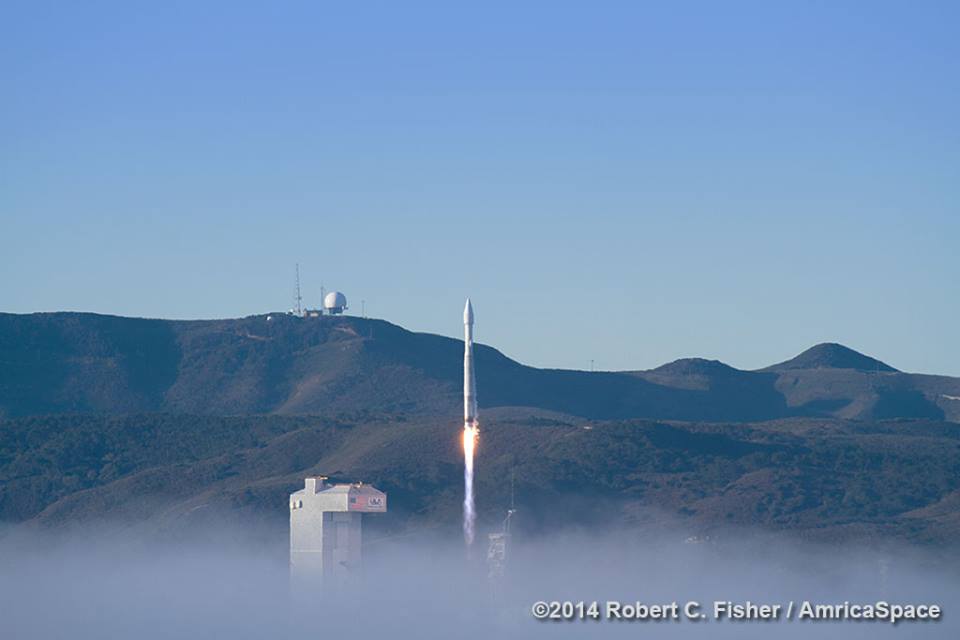

WSF-M seeks to replace the microwave capabilities of the Defense Meteorological Satellite Program (DMSP), a multi-generation network of meteorological, oceanographic and solar physics spacecraft launched between August 1962 and April 2014 and operated by the Department of Defense in Sun-synchronous orbit. Original plans called for the aging and problem-prone DMSP constellation to be replaced by Northrop Grumman Corp.’s Defense Weather Satellite System (DWSS), but following that program’s cancelation in 2012 the Air Force contracted with Ball in November 2017 to develop the first WSF-M.
When fully functional in orbit, WSF-M1 will provide U.S. and allied warfighters with essential weather data, including measurements of ocean surface wind speeds and directions, ice thicknesses, snow depths, soil moisture characteristics and the local energetic particle environment surrounding the satellite. Notably, WSF-M1’s ocean surface wind speed data will facilitate more timely interventions into determinations of the intensity of tropical cyclones by the Joint Typhoon Warning Center.
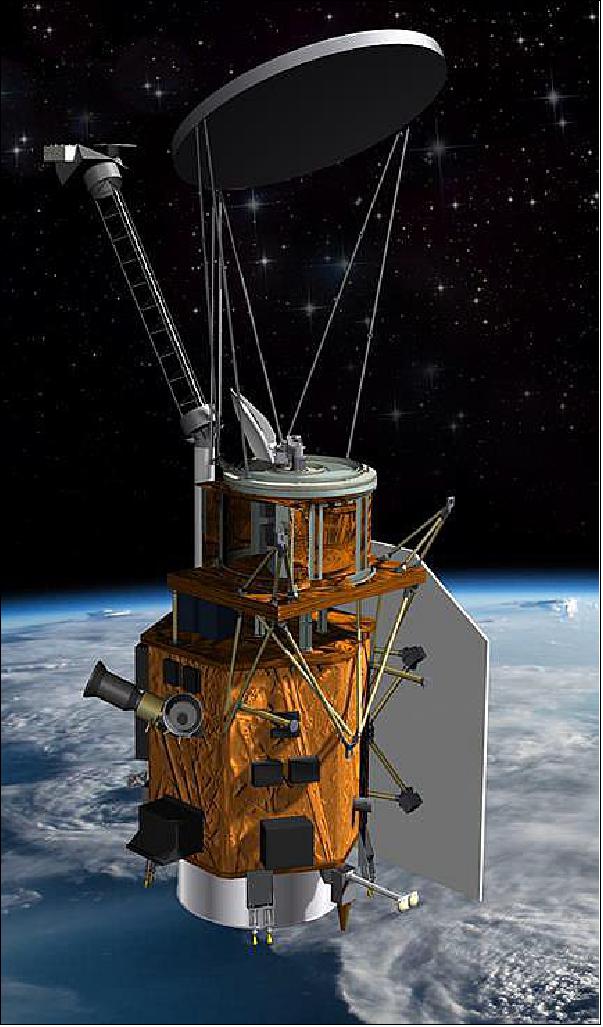

The program completed its Critical Design Review (CDR) in April 2020 and was granted formal program approval a few weeks later, all at the height of the worldwide march of the COVID-19 coronavirus pandemic. Under the terms of the Ball contract, options existed to develop and fabricate up to two satellites to enhance weather forecasting over maritime regions by taking global measurements of the atmosphere and ocean surface and in January 2023 the Space Force exercised that option with a $78.3 million contract modification to build WSF-M2 and launch it in 2028.
“The second WSF-M space vehicle extends our ability to measure wind speed and direction over the Earth’s oceans and provide timely tropical cyclone intensity data beyond the first WSF-M space vehicle’s end of life,” said WSF-M Program Manager David Betz of SSC Space Sensing at the time of the WSF-M2 contract award. “This award is possible because of the dedicated government and Ball team successfully hitting all milestones on the first WSF-M space vehicle.”
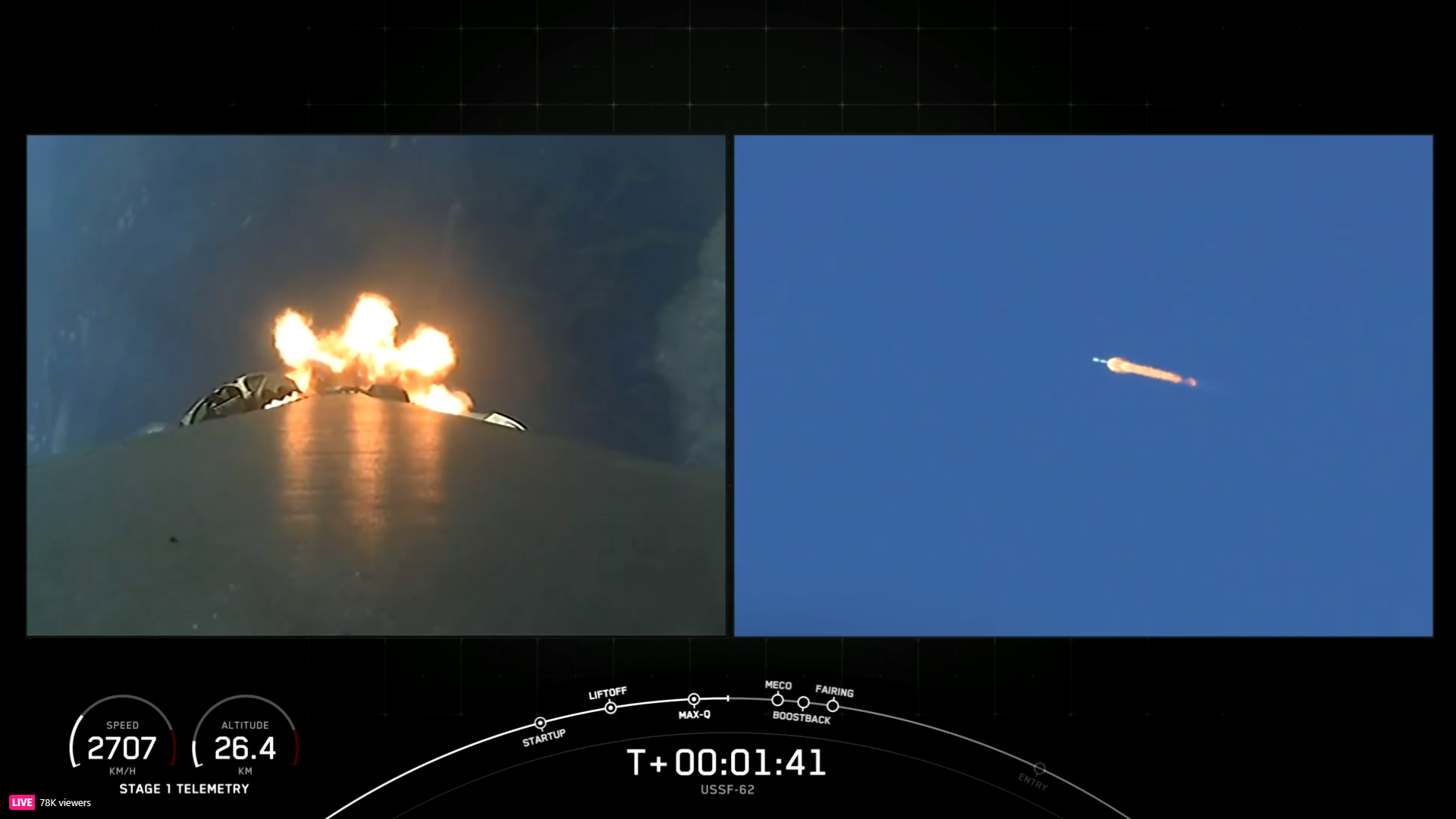

The 230-foot-tall (70-meter) Falcon 9 was rolled out to SLC-4E in readiness for Thursday’s launch, with SpaceX wishing for “clear skies and fair winds” on X. “All systems are looking good and weather is 95-percent-favorable,” it added, as it readied for its first NSSL mission from Vandenberg since April 2022.
Without further ado, B1082 roared aloft into beautiful West Coast skies at 7:25 a.m. PDT, right on the opening of Thursday’s short, ten-minute “window”. Visibility conditions allowed for long-range observation of the Falcon 9 all the way up to Main Engine Cutoff (MECO) at 2.5 minutes into ascent. B1082 returned to a smooth touchdown on solid ground at LZ-4 to wrap up the first “land” landing of her career so far.
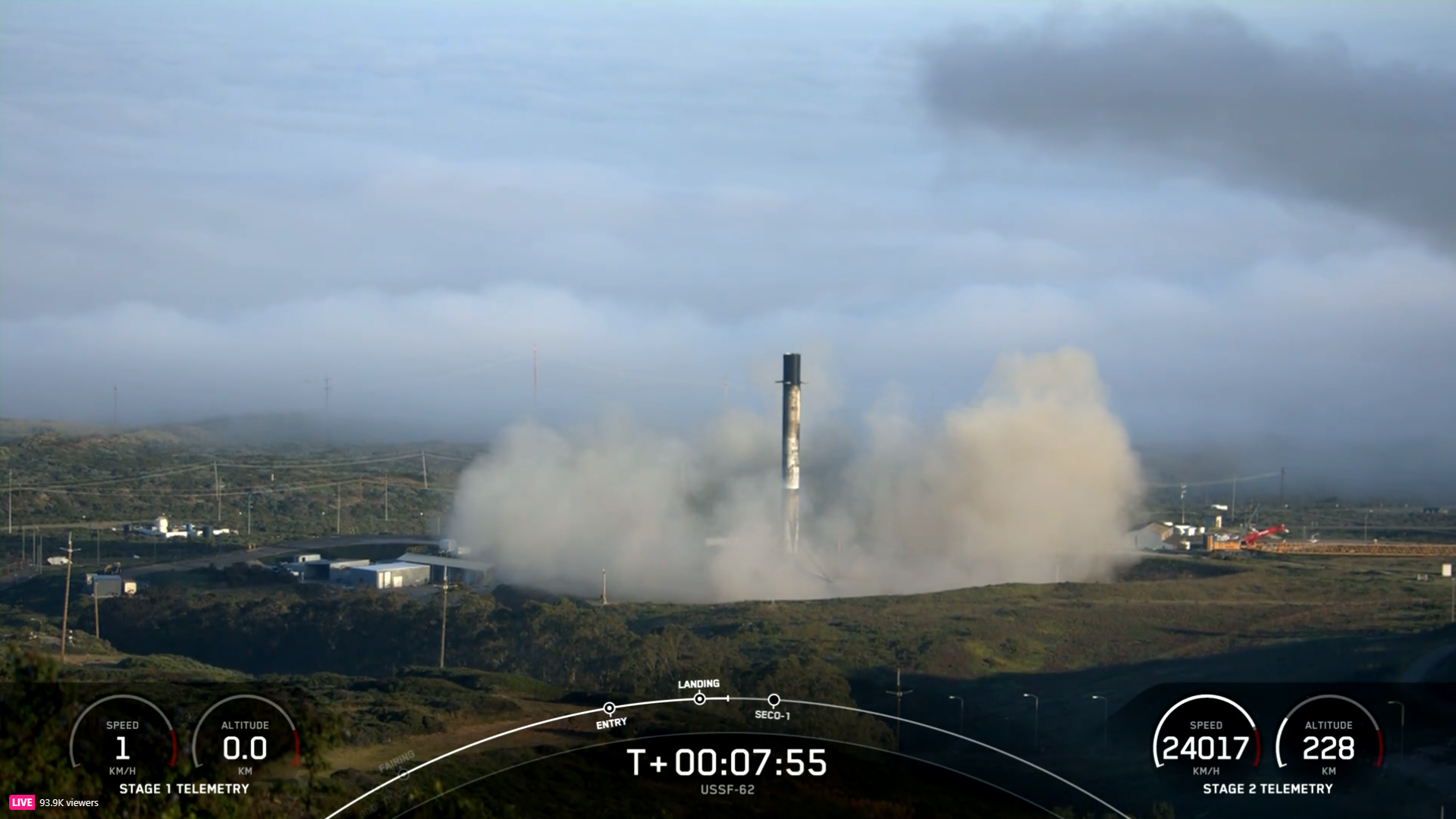

Meanwhile, the second stage’s Merlin 1D+ Vacuum engine performed a pair of “burns” to deliver USSF-62 into orbit: a customary six-minute firing, followed by a 41-minute period of coasting, then a second burn lasting a few seconds, prior to WSF-M1’s deployment at 54 minutes and 57 seconds into today’s flight. At the moment of deployment, the satellite had attained an altitude of 519 miles (836 kilometers) above the Home Planet and was traveling at a velocity of 16,835 mph (27,093 km/h).
USSF-62 marks SpaceX’s second national security mission of 2024, with two more classified payloads definitively set to fly from the Space Coast in the year’s second half. NROL-69, flying for the National Reconnaissance Office, and the Space Force’s own USSF-36, were awarded to SpaceX in March 2021 for Falcon 9 launches under the Phase 2 Launch Service Procurement contract.
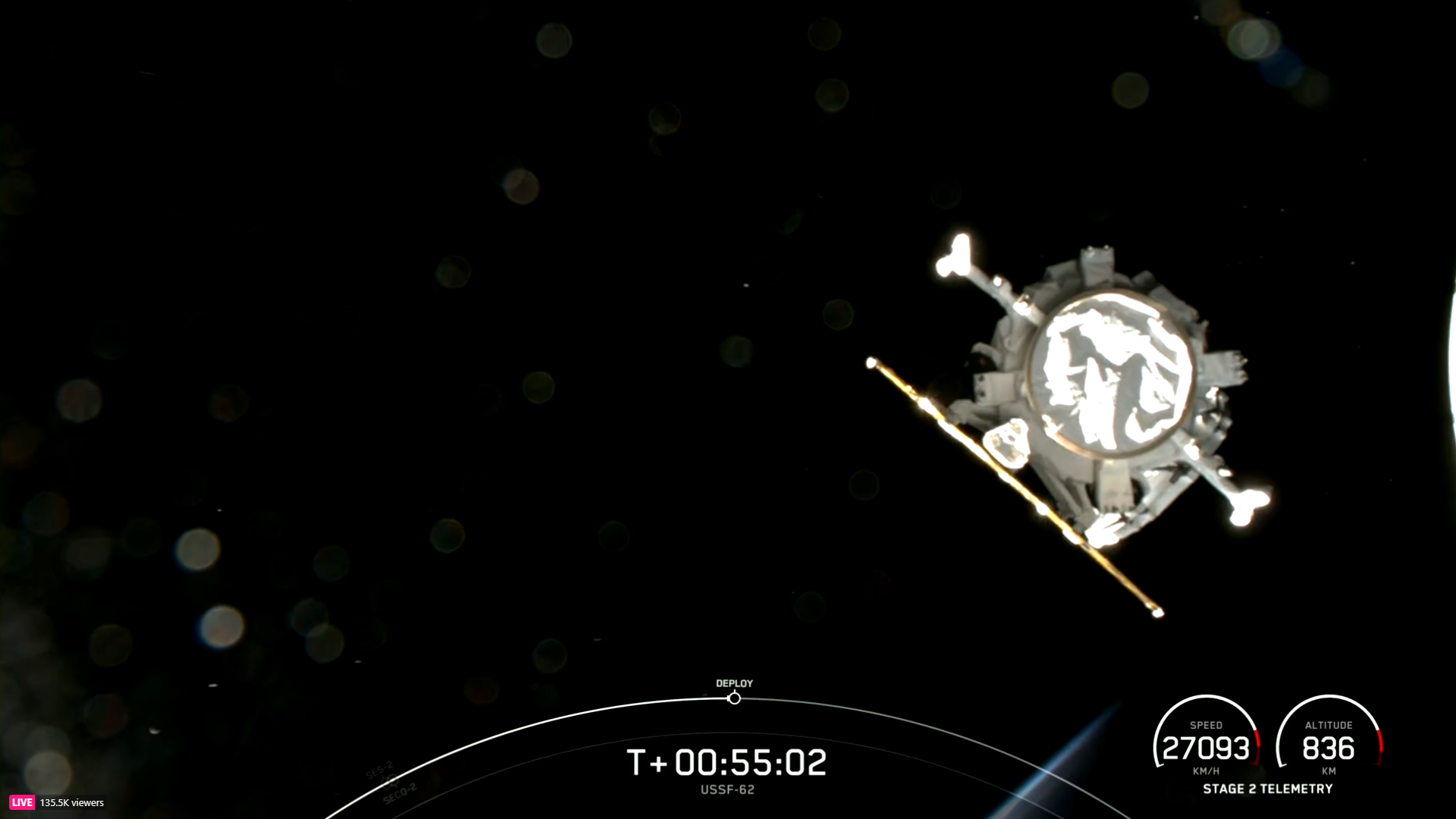

Under the original terms of that $159.7 million contract, USSF-36 and NROL-69 targeted launches in the second and fourth quarters of 2023, respectively, but both slipped markedly to the right. The USSF-36 campaign includes basic launch services and mission integration and NROL-69 features only basic launch services, with the National Reconnaissance Office electing to “fund its mission integration separately”.







